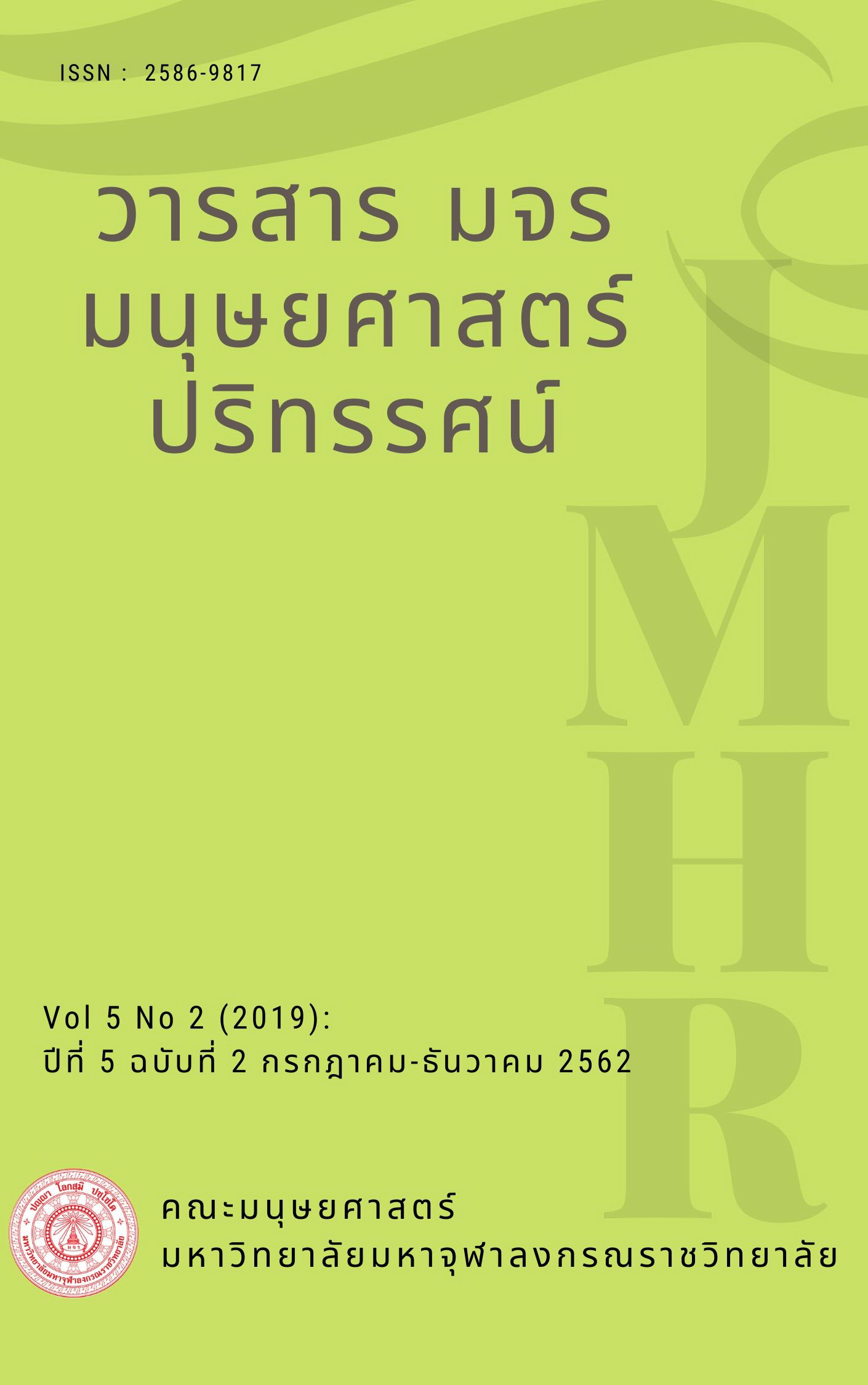การวิเคราะห์ช่องทางการสื่อสารโน้มน้าวใจในการณรงค์งดเหล้าเข้าพรรษาของหน่วยงานรัฐในอำเภอเมืองน่าน จังหวัดน่าน
คำสำคัญ:
การสื่อสาร, งดเหล้าเข้าพรรษา, น่าน, สื่อบทคัดย่อ
บทความนี้มีวัตถุประสงค์เพื่อเสนอผลการวิเคราะห์ช่องทางการสื่อสารที่ได้ผลในการโน้มน้าวใจประชาชนในอำเภอเมืองน่าน จังหวัดน่านให้ความร่วมมือในการงดเหล้าช่วงเข้าพรรษา โดยเก็บข้อมูลจากการสัมภาษณ์กลุ่มตัวอย่างจำนวน 17 ท่านจาก 6 หน่วยงาน และข้อความจากสื่อชนิดต่างๆ จำนวน 77 ชิ้น กรอบแนวคิดในการวิเคราะห์ใช้โมเดล SMCR ของเดวิด เค. เบอร์โล และแนวคิดการสื่อสารโน้มน้าวใจของอรวรรณ ปิลันธน์โอวาท โดยผลการวิเคราะห์พบว่า รูปแบบช่องทางการสื่อสารโน้มน้าวใจขึ้นอยู่กับประเภทของหน่วยงานและเครือข่ายที่ใช้สื่อ โดยช่องทางการสื่อสารที่ได้ผลจะประกอบด้วยปัจจัยดังต่อไปนี้ 1) เครือข่ายของหน่วยงาน: การออกแบบสื่อและช่องทางการสื่อสารที่สอดคล้องกับศักยภาพของเครือข่าย 2) ช่วงเวลาที่เหมาะสมต่อการรับสาร: การส่งสารให้สอดคล้องกับวาระเวลาที่ตรงกับความต้องการของผู้รับสาร 3) ชนิดของสื่อ: การเลือกใช้ช่องทางการสื่อสารที่สอดคล้องกับธรรมชาติและวัตถุประสงค์ของชนิดของสื่อ 4) ผู้รับสาร: เลือกช่องทางการสื่อสารให้สอดคล้องกับพฤติกรรมผู้รับสาร สำหรับข้อเสนอแนะคือ ควรมีช่องทางการสื่อสารที่หลากหลายทั้งแบบการสื่อสารทางเดียวและการสื่อสารสองทางและเปิดโอกาสให้ผู้รับสารมาเป็นส่วนหนึ่งของกระบวนการสื่อสารด้วย
เอกสารอ้างอิง
นวลน้อย ตรีรัตน์. (2557). 10 ปีของการขับเคลื่อนเรื่องสุรา. ใน กรรณจริยา สุขรุ่ง, ปิยนาถ ประยูร หนูเพียร แสนอินทร์ (บรรณาธิการ), เรื่องเหล้าก้าว 10: งานวิจัยเด่นรอบทศวรรษแห่งการเรียนรู้และการขับเคลื่อนนโยบายเพื่อลดปัญหาแอลกอฮอล์ในสังคมไทย. (น. 8-31). กรุงเทพฯ: โรงพิมพ์เดือนตุลา.
สุวรา แก้วนุ้ย. (2557). กลยุทธ์ตลาดออนไลน์ ยุคใหม่แห่งการสื่อสารเครื่องดื่มแอลกอฮอล์. ใน กรรณจริยา สุขรุ่ง, ปิยนาถ ประยูร หนูเพียร แสนอินทร์ (บรรณาธิการ), เรื่องเหล้าก้าว 10: งานวิจัยเด่นรอบทศวรรษแห่งการเรียนรู้และการขับเคลื่อนนโยบายเพื่อลดปัญหา แอลกอฮอล์ในสังคมไทย. (น. 36-61). กรุงเทพฯ: โรงพิมพ์เดือนตุลา.
เสริมศิริ นิลดำ. (2561). สถานภาพงานวิจัยด้านการสื่อสารโน้มน้าวใจในประเทศไทย, การประชาสัมพันธ์ละการโฆษณา, 11(2), 1-27.
อรวรรณ ปิลันธน์โอวาท. (2549). การสื่อสารเพื่อการโน้มน้าวใจ. พิมพ์ครั้งที่ 4.กรุงเทพมหานคร : สำนักพิมพ์แห่งจุฬาลงกรณมหาวิทยาลัย.
Richard E. Petty & Pablo Brinol, (2008). Persuasion: From Single to Multiple Metacognitive Process. Perspective on Psychological Science. 3(2): 137-147.
กมลรัฐ อินทรทัศน์ และพรทิพย์ เย็นจะบก. (ม.ป.ป.). หลักและทฤษฏีการสื่อสาร. สืบค้น 10 ธันวาคม 2562, จาก https://pirun.ku.ac.th/~agrpct/envelop/com%20theory.doc
วิชัย นิลคง และสุมาลี ซุยหาญ. (ม.ป.ป.). นโยบายสาธารณะงานวัฒนธรรมประเพณีลดละเลิกเหล้าเบียร์ จังหวัดน่าน”.[Press Release]. สืบค้น 13 ธันวาคม 2562, จาก www.nno.moph.go.th/research/index.php/2558/item/download/273_e541e17d3449 42ac594287973d887f88






